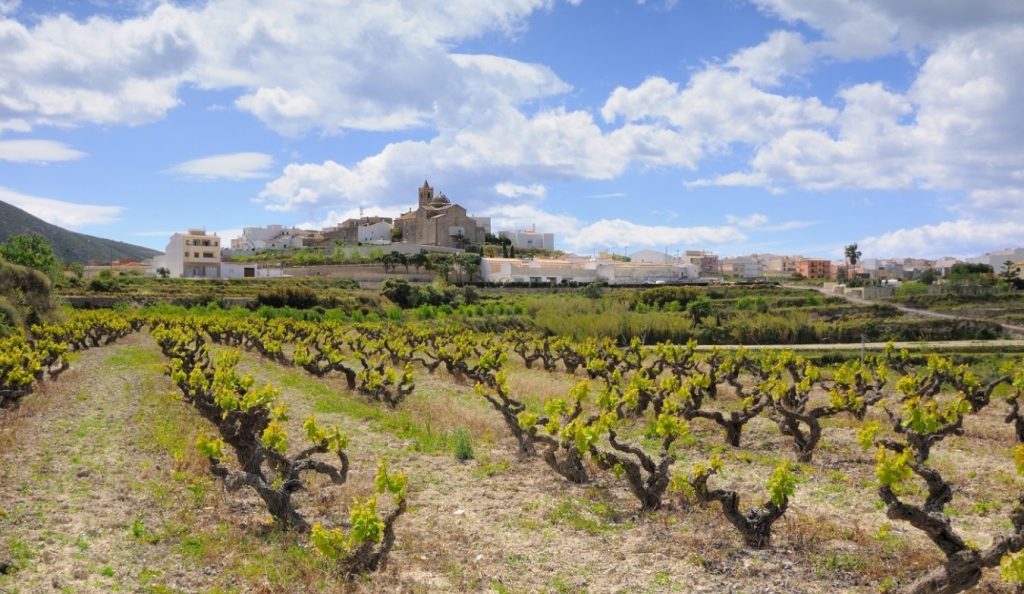Orígenes
El Poble Nou de Benitatxell cuenta con un pasado interesante y rico gracias a las distintas culturas que habitaron los diferentes poblados y masías y que dejaron huellas muy visibles en la toponimia, lengua en general y algunas construcciones y costumbres.
Los primeros indicios de ocupación datan del paleolítico, en estudios realizados en la Cova del Moro. En este mismo yacimiento y en els Forats del Barranc de l’Asbardal, también se han encontrado restos del calcolítico (entre el 2.200 aC – 1.800 aC). Y de la edad de bronce (1.800 aC – 700 aC) se localizan evidencias de pobladores en el Tossal d’Arnau y el Tossal Redó. Ambos se sitúan en la parte alta de dos colinas, en presumible situación de defensa y control del territorio.
En la época ibérica (550 aC – 210 aC) se han observado la presencia de tres núcleos destacables. El Tossal de l’Abiar continúa siendo un asentamiento con clara finalidad de defensa. Pero en sus cercanías se han hallado interesantes objetos en la vertiente de la colina conocida como Cova de les Bruixes (Cueva de las Brujas). También se tiene constancia de restos cerámicos en els Valentins o la Font.
En El Poble Nou de Benitatxell se encuentran importantes indicios de época romana (210 – 476 aC) en l’Abiar. El asentamiento del Tossal del Abiar es considerado un hábitat de explotación agrícola que además, ejercería un control sobre el territorio que lo rodeaba. Esto es debido a que se trata de una zona muy rica en aguas subterráneas que favorecía las explotaciones agrícolas. En els Pous de l’Abiar también se han encontrado restos vinculados a la producción vitivinícola.
Hacia el sur del actual núcleo urbano, se baraja la posible existencia de asentamientos en el camí de la Roca. En el Pinaret, también se han localizado distintos restos de materiales tardoromanos.
Uno de los legados más importantes de la época islámica es la aportación toponímica que incluso aparece en el nombre del municipio, Benitatxell (con referencias de Benitagell). De esta cultura se conservan nombres de partidas como Lluca, Abiar, Alcassar, Moraig (Almoraig), Benicambra, etc.
En 1.497 todavía existiría un núcleo poblacional independiente en la partida Lluca. En el Abiar se ha detectado la existencia de diversas alquerías en el siglo XI, con restos arquitectónicos de pozos de agua, una cueva, una casa señorial. Igualmente, existe constancia de una necrópolis hispanomusulmana en el Alcassar. Y en el antiguo Benitagell se han documentado estructuras como silos o pequeños almacenes de alimentos. Esta alquería estaría ubicada en los actuales terrenos de la iglesia.
De todo ello, se evidencia la gran importancia de la cultura árabe en el municipio.



Fundación de El Poble Nou de Benitatxell
En 1244 las tropas cristianas de Jaume I conquistaron la ciudad de Dénia (Daniya) y todo su territorio, en el que se encontraba El Poble Nou de Benitatxell.
Varios avatares históricos, entre ellos la expulsión de los moriscos en 1609, condujeron al despoblamiento y abandono de las antiguas alquerías árabes del Abiar y de Benitagell entre 1609 y 1617. A partir de esta fecha se inició la repoblación de cristianos viejos de Mallorca, cuenca baja del Segre y Lleida principalmente, y se construyó la Iglesia dedicada a Santa María Magdalena (1710), en cuyo alrededor se agruparon los nuevos habitantes.
La población dependió de Xàbia, dentro del marquesado de Dénia, hasta 1698, cuando se constituyó en entidad propia. De ahí, que en su escudo pueden verse todavía las 5 estrellas de la casa dianense.
El acta de erección de la Universidad de Benitatxell, del 4 de enero de 1698, da testigo de la existencia de 22 casas, donde vivirían un centenar de habitantes, entre los núcleos de población de la Alquería del Abiar y Benitatxell. Cita también una iglesia situada en el núcleo de Benitatxell. La mencionada acta marca los límites del término del pueblo y hace referencia al “Poble antich que al present está derruit anomenat de Lluca”. En contraposición a este pueblo antiguo nacería por toda la comarca el apelativo de Poble Nou (Pueblo Nuevo) que da nombre al actual Poble Nou de Benitatxell.
